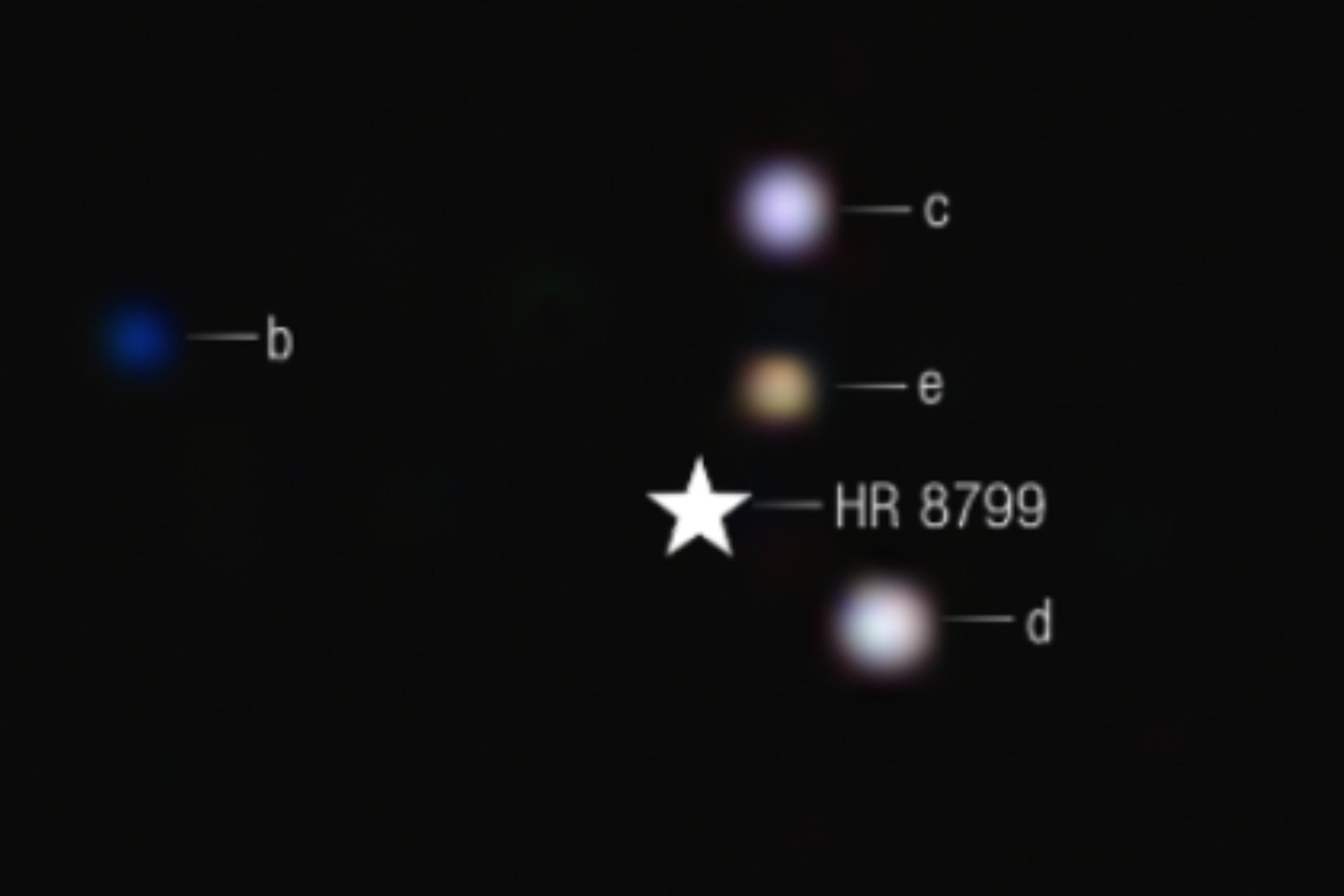Nasa’s webb space telescope has captured direct images of carbon dioxide in a planet beyond our Solar system for the first time.
The images feature hr 8799, a Multiplanet system 130 light-Years from Earth. The discovery not only reveals a chemical compound essential on Earth for processes including photosynthesis and the carbon cycle, but also indicates that gas ga giant planets elsewhere in the galaxy formed in a Simillar Way to our local giants, Jupiter and Saturn. The team’s analysis of the webb imagery was Published Today in the Astrophysical Journal.
“By Spotting these Strong Carbon Dioxide Features, We have Shown there is a sizable fraction of heavier elements, such as carbon, oxygen, and uron, in these planets’ atmospherirs,” atmospherers, ” Balmer, an astroophyssicist at Johns Hopkins University and Lead Author of the Study, in a University release. “Given what we know about the star they orbit, that likely indicates they formed via core account.”
The HR 8799 system is roughly 30 million years old, making it downright infantile in the scales of deep time, as it only began about began about halfway between the dinosaurses (Our OWN Solar System is about 4.6 billion years old).
Because of its nascent development, the planets in the hr 8799 system are seen emitting lots of infrared light -Perfect emissions for the webb space telescope, which IMAGES At Inferade and NEARA-NEARARERERED Wavelengths. By analyzing these emissions, scientists can determine how the planets formed and uncover other characteristics of these distant worlds.
“Our hope with this kind of research is to understand our own solar system, life, and ourselves in comparison to other exoplanetary systems, so we can contextualize our existence,” Balmer said in The release.
“We want to take pictures of other solar systems and see how they are similar or different to compared to Oers,” They added. From there, we can try to get a sense of how weird our solar system really is – or how normal. “
Large Planets Like Jupiter Form One of Two Ways, as far as planetary scientists knowledge knowledge The disk of cooling material Around a young star.
Based on Its Analysis, The Team Believes The Four Planets in HR 8799 formed from the bottom up, and study more webb observations also how Common-or Rare -That Application to World- Luxury.
In 2022, The Webb Telescope detected Unequivocal evidence of carbon dioxide in the atmosphere of a distant exoplanet called wasp-39b. But that detection was made indirectly, so the latest accounting newly validates the telescope’s ability to spot the gas in distant star system.
Scrutinizing the giant gas planets like that recently observed in hr 8799 can help CLUE Researchers into how thinking planets affects affect lesss massive Worlds Around Us, For Better and Force.
The team’s observations also made the first-ever detection of the system’s innermost plan, another testing ground on which webb passed with flying colors. The Multibillion-Dollar Space observata is collecting reams of data for astroophyssicists to sift through, revealing the sources of the oldest light we can see see and teasing out of Planets of Planets of Planets of Planets Too Fant to identify.
Webb is revolutionizing the astroophyssical discoveries scientists can make peering into deep space. The telescope is expected to operate for at least a decade, and perhaps longer, so buckle up for years of new insights into planetary formation.
